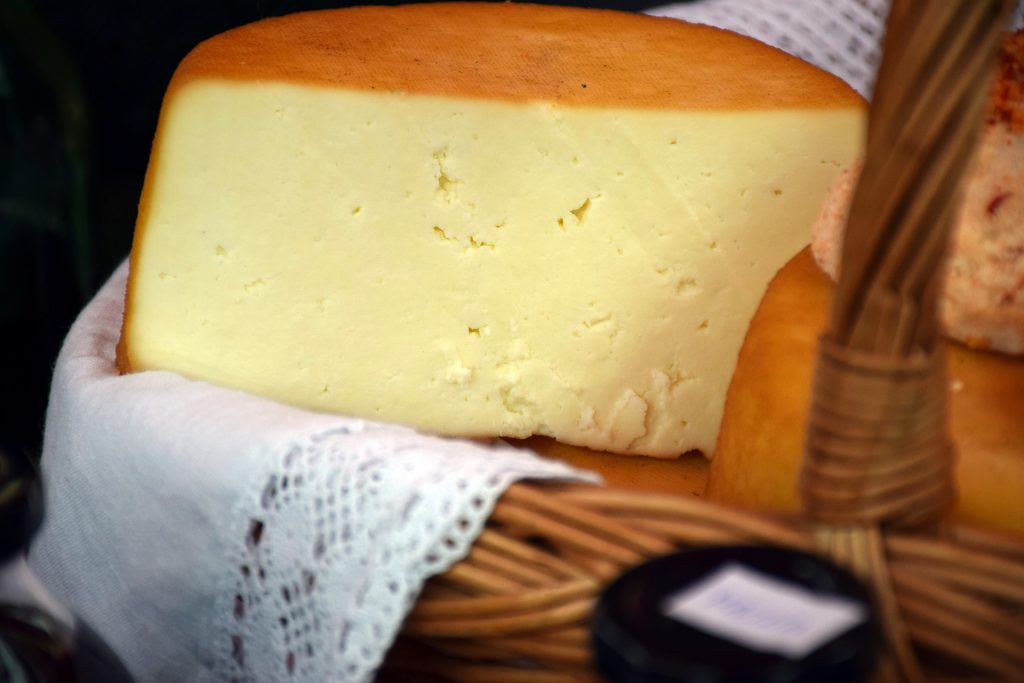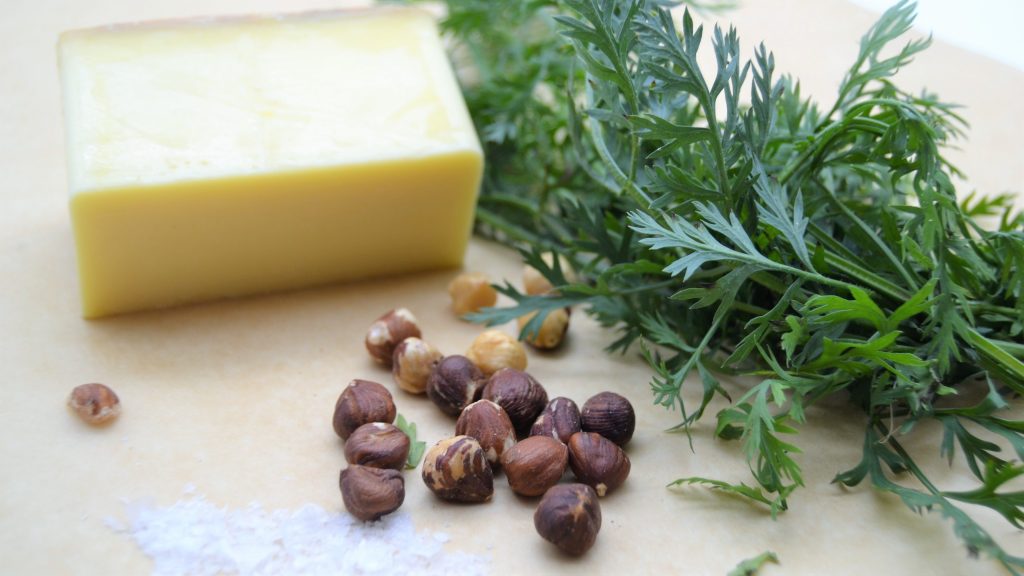Fontina Cheese and All About it!

Fontina cheese is produced from cows milk. Its production started in Italy in the 12th century and is one of the oldest forms of cheese present.
Discover everything you need to know about Fontina cheese right here, right now!
What is Fontina Cheese?

It is semisoft cheese with a medium to sharp flavour. With 45% milk fat content, fontina cheese is an exciting blend of nutty and savoury taste.
Fontina produced in Sweden, UK, and Denmark is milder in taste than Italy. Also, to keep close to the nice looking cheese texture, the cheese from these countries have more holes than the usual fontina.
The Origins of Fontina Cheese
If you are looking where this cheese originated first, here we go. It first originated in Aosta Valley in the Alps in the 12th century.
The original cheese has a very intense flavour, which got milder as its recipe travelled to other countries. In the UK, Denmark, and Sweden, you will experience a milder version, which puts it well into the cheese family.
If you want an “ouch” while tasting a fontina, visit Aosta Valley in Italy and taste the sharper version. Fontina cheese UK is a less tangy version of it.
How is it made?
Just like other cheese, fontina is extracted out of unpasteurized milk. This cheese is extracted from a single milking cow of the Valdostana breed to keep the taste a bit milder.
This food’s excellence is achieved by making two batches per day out of the standard herd’s milk.

Uses of the Cheese
Though fontina has a tangy flavour, its milder range can be used in several ways.
The fontina cheese alternatives are many, but primarily it is best used as an extra topping to mozzarella. The tangy and twisty flavour of fontina makes it very delicious to use with other cheese.
The yummy Italian stuffed toasts get yummier when you use fontina. It is also used in stuff chicken, tots, and zucchini rollups. Fontina sauce is also used in many recipes, making them a finger-licking experience.
However, its use with mozzarella is most praised so far.
Mozzarella Vs. Fontina Cheese
Both kinds of Italian cheese are similar in many ways, which is why they complement each other in a recipe. However, fontina is made out of a cow’s milk, and mozzarella is extracted from buffalo’s milk.
Also, if you happen to see their stretch drying process, it is almost the same. This is because both cheese shapes in similar consistency and texture.
In that case, Mozzarella could be an ideal substitute for the recipe that tastes well with fontina. But let’s discuss a few other cheese forms that have a similar tinge and texture.
7 Substitutes for the Fontina Cheese
If you put fontina cheese on the grocery list and did not find fontina cheese in UK stores, you can have substitutes that serve the purpose.
Gruyere
This is one of the closest fontina cheese alternatives. It has a texture and taste that is very close to fontina. It was originated in a Swiss village, Gruyere that why it is named Gruyere. Its texture and nutty flavour will remind you of fontina.
It makes pasta, soup, and macaroni dense and creamy.

Gouda
Gouda is a perfect choice for wine, soups, and sauces. It is not a very popular cheese; however, it is an excellent alternative to Fontina cheese.
It originated from the Netherlands. Like fontina, it is made of cow milk. Some producers also extract this cheese from goat and sheep.

Taleggio
Taleggio also an Italian cheese and is mostly used for meat-based dishes like ham, bacon, and chicken.
It is a perfect fontina cheese alternative because of its tangy flavour and fat content. Just like fontina cheese UK, it has a distinctive smell too.

Havarti
It is a very delicious substitute for fontina cheese as it is used with fruits, herbs, and spices. It is also known as the dessert cheese.
When coupled with salsa and tuna, the cheese gets smooth and dense.

Emmental
This is also very similar to fontina cheese due to its acidic and fruity taste. It is also nutty and can tastes best with fruits and salads.
It is popularly called Swiss cheese and has quite a pungent and strong smell. It is the hardest to make cheese in all the cheese types discussed so far.

Parmesan
It is one of the very popular cheese and is extensively used in pizza, pasta, spaghetti. It is hard, dense, and nutty; that is why people use it efficiently as a fontina cheese alternative.
Unlike fontina cheese UK, it is used as grated cheese in soups and risotto. It is very balanced in sodium content.

Appenzeller
If you are still confused about what fontina cheese is and where to find it, “since it’s very rare,” you can unarguably use Appenzeller. It resembles fontina cheese as it is made of unpasteurized milk and has a spicy flavour.
Appenzeller is a semi-hard Swiss cheese, and it is dense and creamy.
These are a few kinds of cheese similar to fontina cheese UK; let’s discuss some nutrition facts about fontina to know how it is linked to your diet.

Nutritional Facts about Fontina Cheese
Nutrition is an essential part of the diet; here is the complete information on fontina cheese.
- Total fat content is 31g
- 47%, saturated fat is 13g 95%
- Polyunsaturated fat is 1.7g
- Monounsaturated fat is 9g
- Cholesterol is 116mg 38%
- Sodium is 800mg 33% (one of the highest)
- Potassium is 64mg 1%
- Total carbohydrate and sugar are 1.6g
- Dietary fibre is 0g.
- Iron is 1%
- Vitamin B-6 is 5%
- Vitamin A is 18%
- Vitamin C 0%
- Calcium 55%
- Vitamin D 5%
- Cobalamin 28%
- Magnesium 3%.
Conclusion
Fontina cheese is very mild yet tangy to your taste buds. If you are looking for fontina cheese uk, you can look into stores and find one.
If your nearby mart does not have this rare cheese, mozzarella and parmesan are some of the few that would complement your recipe as the best fontina cheese alternative. And if you know what fontina cheese is and how it is made, try to make one at home.
It will be worth it!

Andy
Ever since I started cooking I’ve been fascinated by how different people’s techniques are and how they best utilise the ingredients around them. Even the person living next door will have their own unique way of frying an egg or cooking a salmon fillet.
This fascination led me on a journey across the globe to discover the countless practices and traditions the world of cooking has to offer. I thought you’d enjoy and find value in sharing that journey with me so I created Cooked Best!